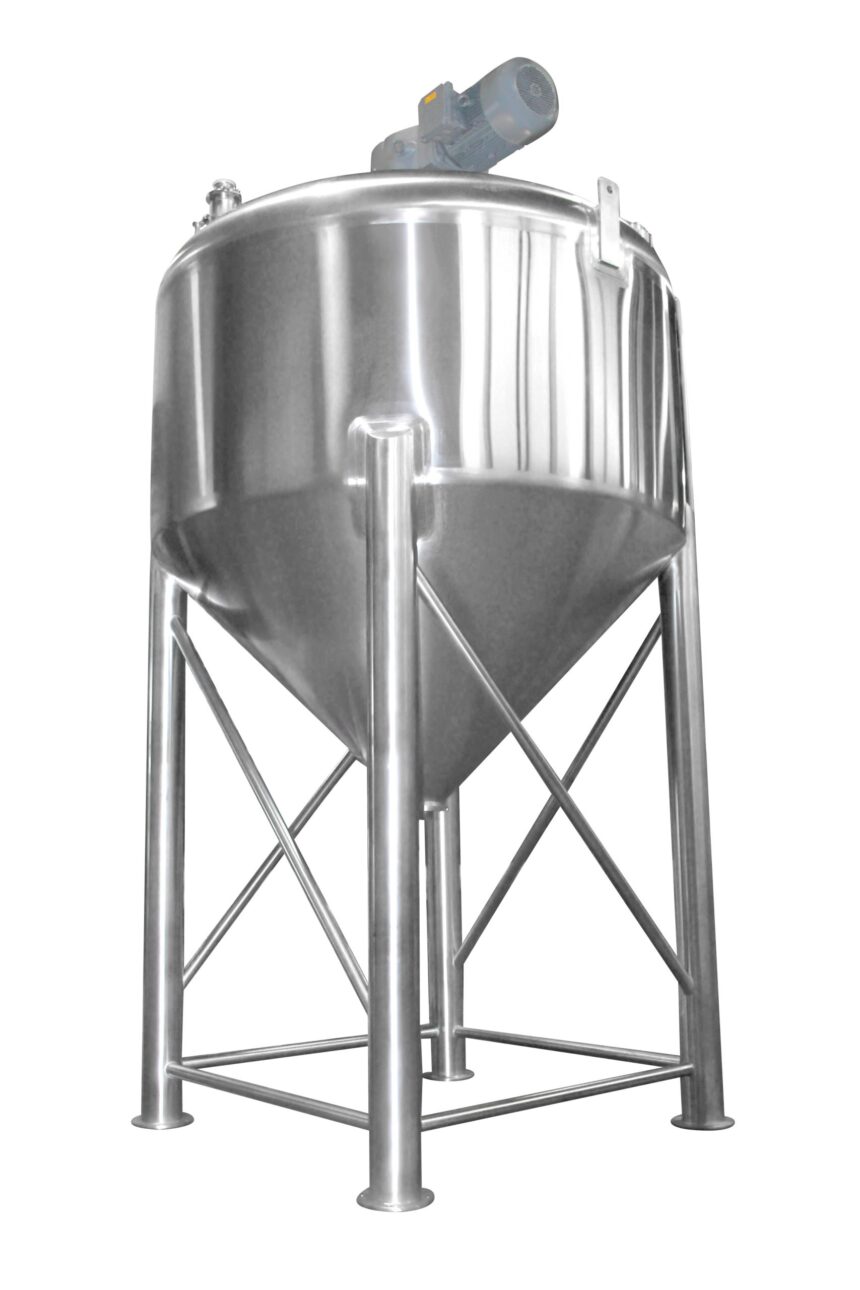Mixing tanks play a crucial role in various industries, including food processing, pharmaceuticals, chemicals, and manufacturing. These tanks ensure uniform blending, proper chemical reactions, and consistency in production. However, like any equipment, mixing tanks can encounter operational issues that affect efficiency, product quality, and overall performance. This article explores common problems with mixing tanks and practical solutions to fix them.
1. Inadequate Mixing or Poor Homogenization
Problem:
One of the most common issues with mixing tanks is poor mixing performance, leading to uneven distribution of components. This can occur due to improper impeller selection, inadequate agitation speed, or incorrect tank design.
Solution:
- Choose the right impeller: Different mixing applications require different impeller types. A radial flow impeller is ideal for low-viscosity fluids, while an axial flow impeller works best for high-viscosity liquids.
- Adjust agitation speed: Ensure the motor and impeller rotation speed are appropriate for the mixing process. Too fast or too slow speeds can lead to inefficiencies.
- Optimize tank design: The shape and size of the tank should complement the mixing process. Adding baffles can improve circulation and reduce vortex formation.
2. Foaming Issues
Problem:
Excessive foam formation can be a significant issue, especially in food, pharmaceutical, and chemical processing. Foam reduces the effective volume of the tank and may lead to contamination or inconsistent product quality.
Solution:
- Use anti-foaming agents: Certain additives help control foam formation.
- Adjust mixing speed: High-speed mixing can introduce excess air, leading to foaming. Reducing the speed can minimize this Mixing Tank effect.
- Optimize impeller positioning: Placing the impeller at the correct depth can help minimize turbulence and air entrainment.
3. Sedimentation and Settling of Solids
Problem:
In industries dealing with suspensions or slurry mixing, solid particles often settle at the bottom of the tank, leading to inconsistent product formulation.
Solution:
- Use a proper impeller type: A pitched blade or hydrofoil impeller can provide better circulation and prevent solids from settling.
- Increase mixing time: Allow sufficient mixing time to keep solids in suspension.
- Adjust impeller position: Positioning the impeller closer to the bottom can enhance solid dispersion.
4. Air Entrainment and Cavitation
Problem:
Air bubbles trapped in the mixture can lead to product instability, affecting texture and consistency. Cavitation, on the other hand, occurs when vapor bubbles collapse near the impeller, causing damage to equipment.
Solution:
- Adjust impeller depth: Keeping the impeller at the correct depth prevents air from being drawn into the mixture.
- Reduce agitation speed: Slower speeds reduce the risk of air incorporation.
- Use defoaming techniques: Implementing anti-foaming additives or vacuum deaeration can help mitigate air entrainment.
5. Tank Corrosion and Material Degradation
Problem:
Corrosion and wear can occur due to the nature of the substances being mixed, especially in chemical and pharmaceutical industries where harsh chemicals are used.
Solution:
- Select corrosion-resistant materials: Stainless steel, polyethylene, or coated tanks provide better resistance to chemical reactions.
- Regular maintenance and inspection: Routine checks help detect early signs of corrosion.
- Use protective coatings: Epoxy or rubber linings can extend the tank’s lifespan.
6. Leakage and Seal Failures
Problem:
Leaks from mixing tanks can result in product loss, contamination, and safety hazards. Seal failures in shafts and valves often contribute to leakage problems.
Solution:
- Inspect seals regularly: Worn-out seals should be replaced promptly.
- Use high-quality gaskets: Ensuring the right type of gasket for the material being mixed can prevent leaks.
- Apply proper torque on fasteners: Over-tightening or under-tightening bolts can affect sealing efficiency.
7. Inconsistent Temperature Control
Problem:
Many mixing processes require precise temperature control. Improper heating or cooling can affect the reaction rate, product quality, and viscosity.
Solution:
- Use an efficient heat exchanger: Jacketed tanks or external heat exchangers help regulate temperature effectively.
- Monitor temperature continuously: Installing temperature sensors and automated controls ensures stability.
- Optimize mixing speed: Adjusting the agitation speed can help distribute heat evenly within the tank.
8. Dead Zones and Poor Circulation
Problem:
Some areas in the mixing tank may not receive proper circulation, leading to inconsistent mixing and poor product quality.
Solution:
- Install baffles: Baffles help break up swirling motions and promote even mixing.
- Use multiple impellers: Adding more than one impeller can improve circulation.
- Change tank geometry: A different tank shape, such as a cone-bottom design, can eliminate dead zones.
9. Motor Overheating and Mechanical Failures
Problem:
Overheating motors and frequent mechanical breakdowns can cause unplanned downtime and increased maintenance costs.
Solution:
- Ensure proper motor sizing: Undersized motors can overheat quickly. Ensure the motor matches the required workload.
- Lubricate moving parts: Bearings, shafts, and other moving components should be well-lubricated to reduce friction and wear.
- Check alignment: Misaligned shafts can lead to excessive vibration and damage.
10. Excessive Energy Consumption
Problem:
High energy usage can increase operational costs, making mixing an expensive process.
Solution:
- Optimize impeller design: A properly designed impeller reduces power consumption while maintaining efficiency.
- Use variable speed drives (VSDs): Adjusting motor speed based on mixing requirements helps save energy.
- Regular maintenance: Ensuring all components work efficiently minimizes unnecessary power use.
Conclusion
Mixing tanks are vital in industrial applications, but they can face several operational challenges. Addressing common issues such as inadequate mixing, foaming, sedimentation, air entrainment, and corrosion requires proper equipment selection, regular maintenance, and process optimization. By implementing these solutions, industries can enhance efficiency, reduce downtime, and ensure consistent product quality. Regular monitoring and preventive maintenance are key to maximizing the lifespan and performance of mixing tanks.

